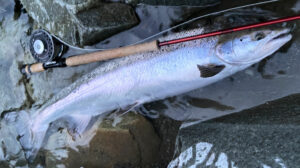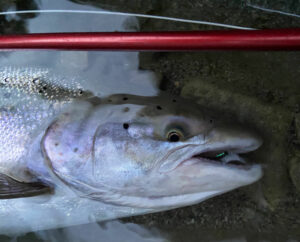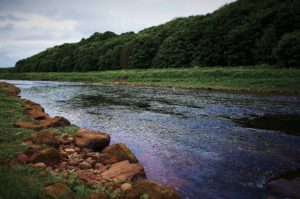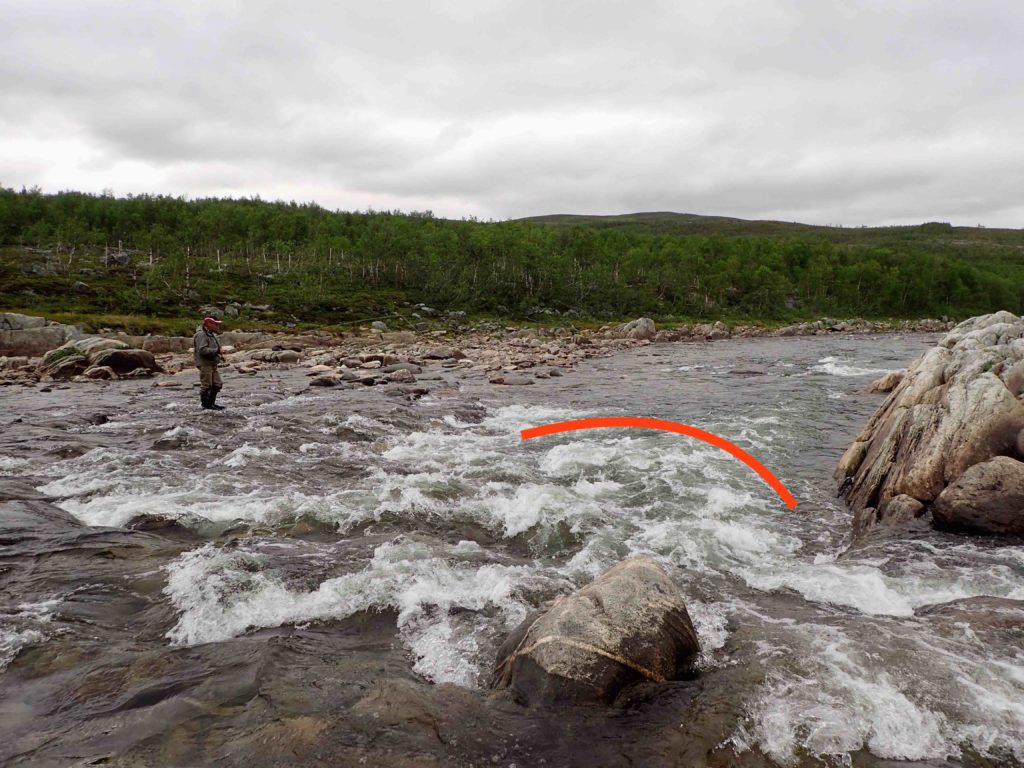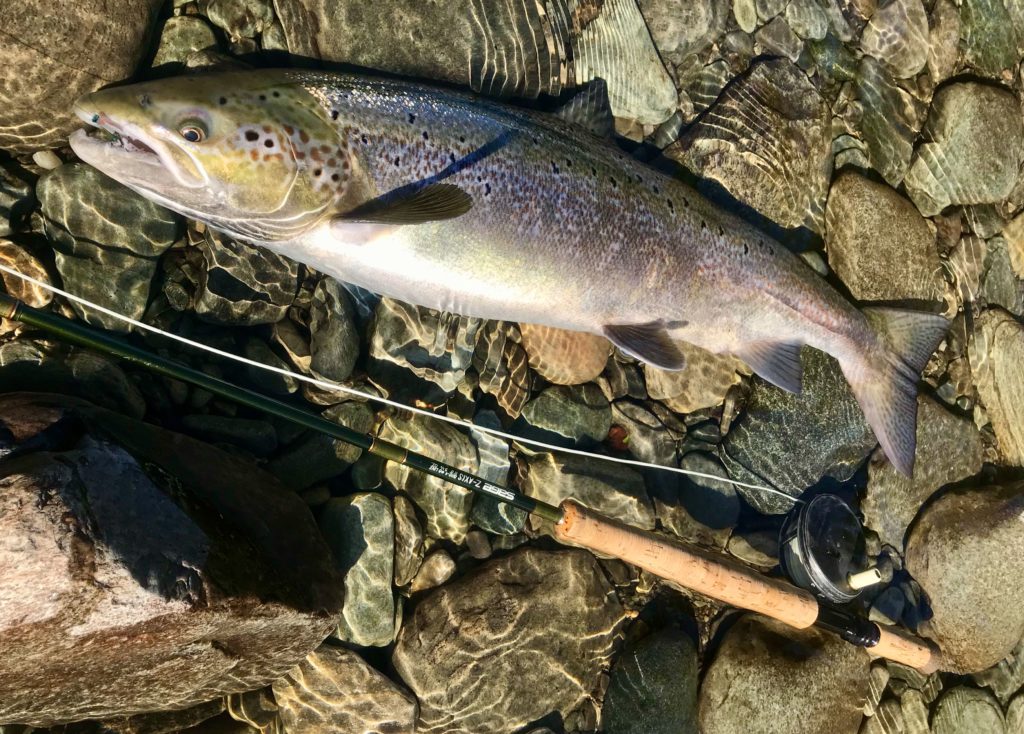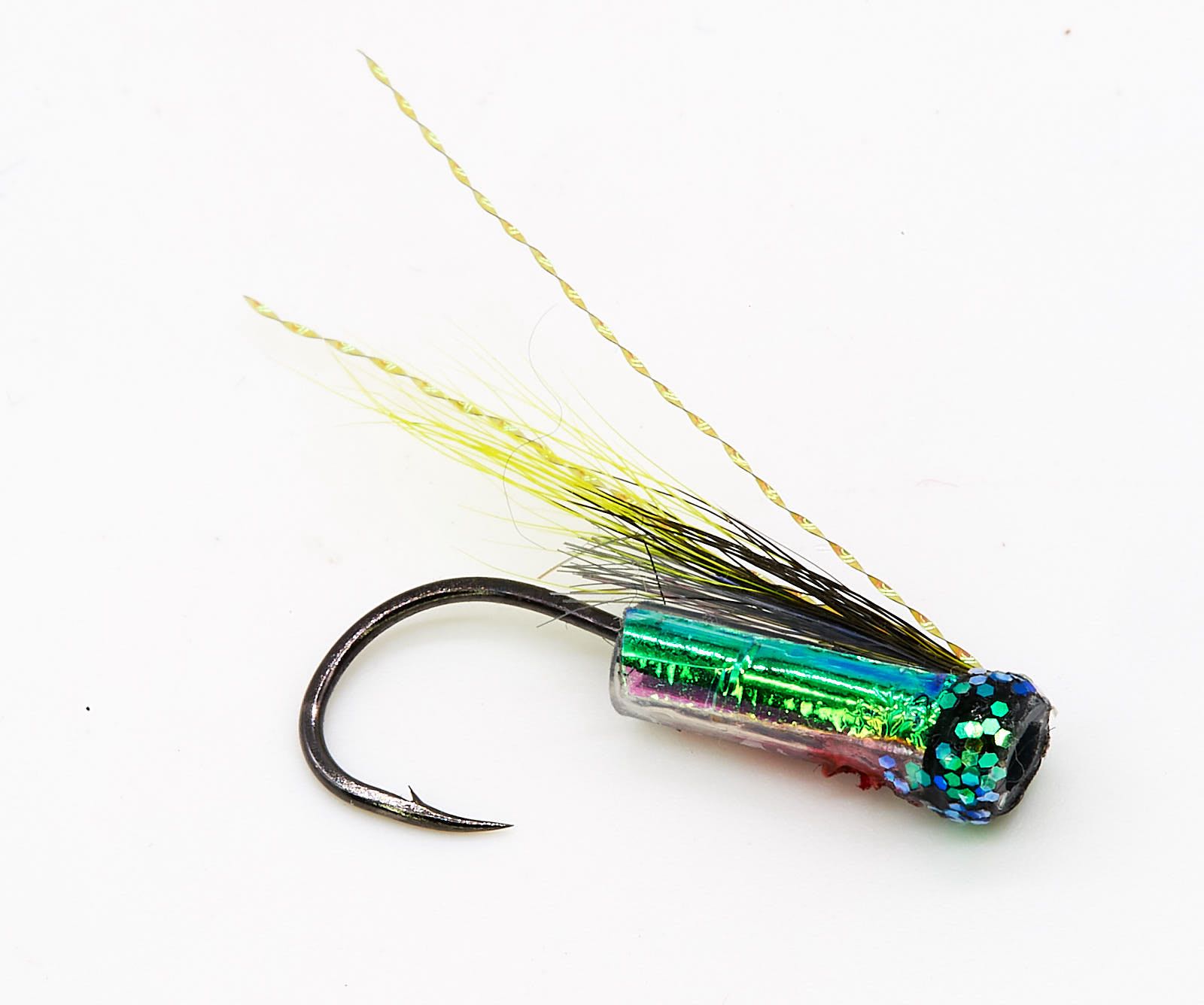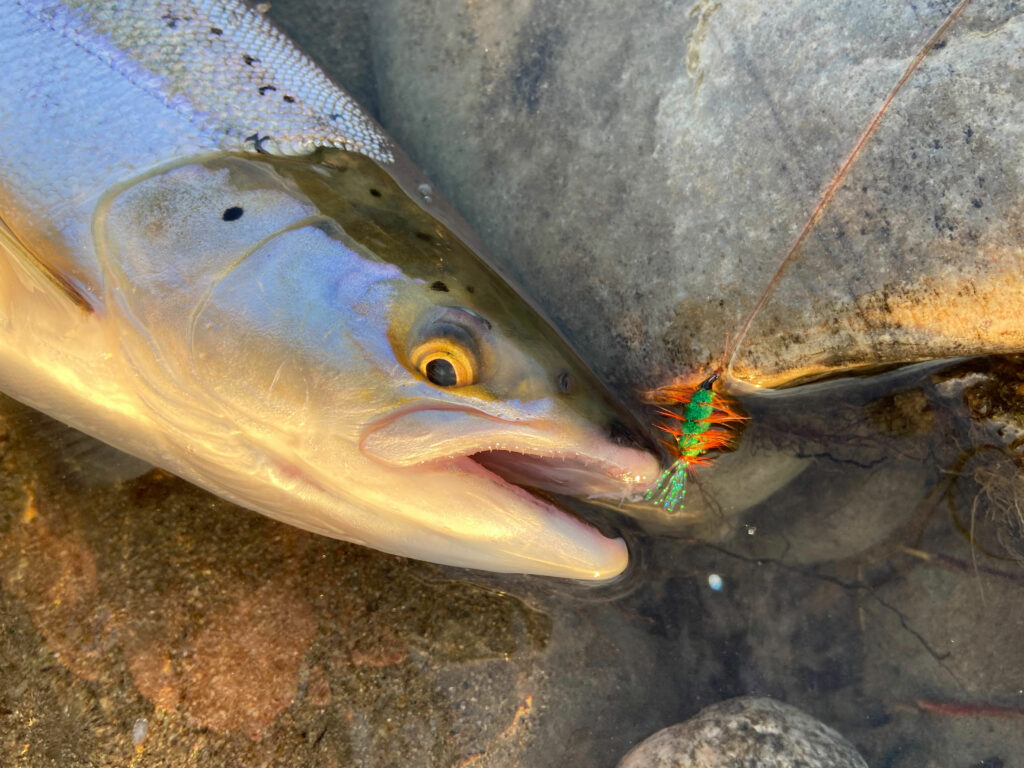It's all happening right in the surface
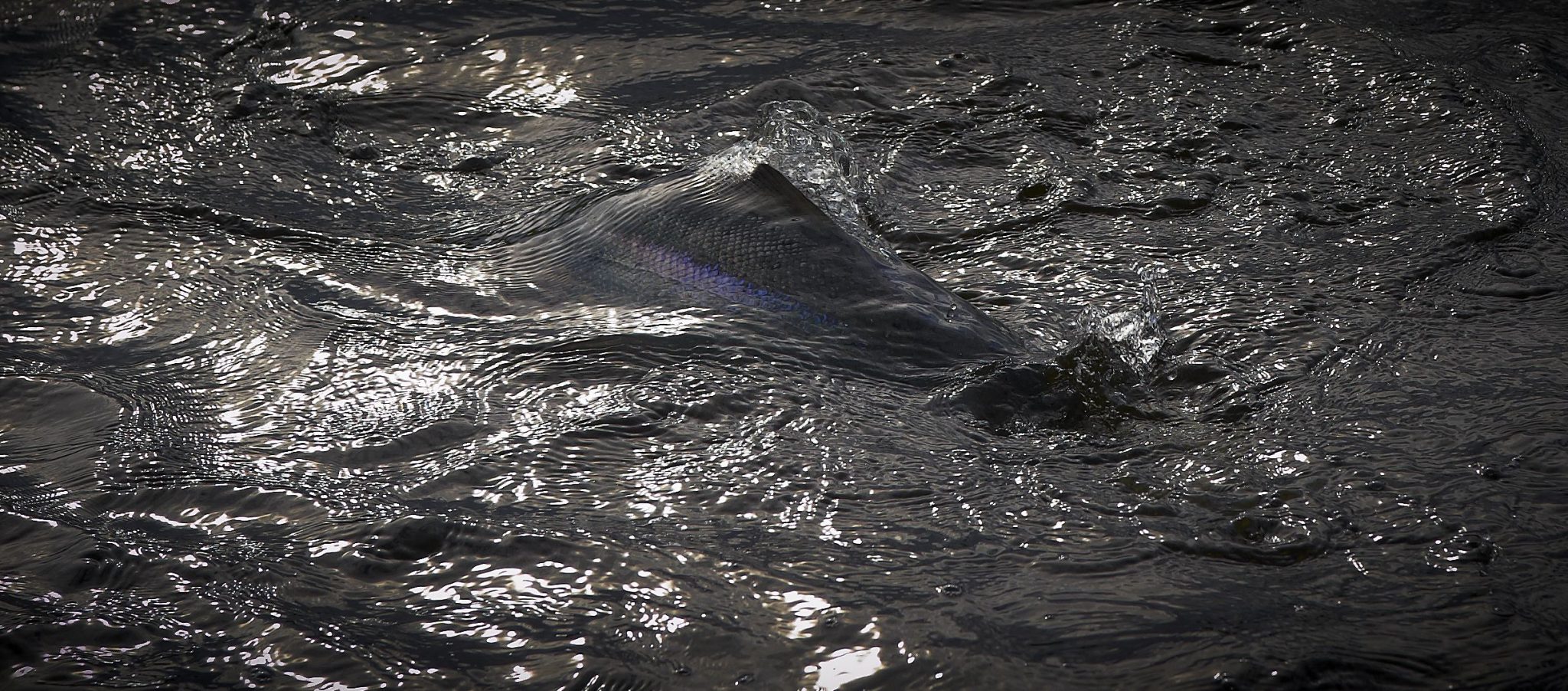
It’s all happening right in the surface – Which makes the riffling hitch technique one of the most fantastic sports a fly fisherman ever can venture into – Some of the best takes of the season will be on the hitch fly – and both big and small salmon is drawn to this miniature fly in such a way that your whole perception of salmon fly fishing will change once you have tried this sports of sports..
Your perception of salmon fly fishing will change once you have tried this sport.
Riffling Hitch is not a particularly demanding sport – but like when fishing dry fly, skating, dibbling or dipping, it´s a sport that demands your full attention.
It is associated with fly fishing for Atlantic salmon but is also a technique equally used by anglers fishing steelhead on top.
Fishing riffling hitch is a visual sport, and salmon will always show themself when they approach the fly – Doing so gives away vital information about their position. Still, they will also give you some idea about their intentions.
Sometimes it can be tiny aspect in the way you present the fly – or it could be small details in the way the fly move that make all the difference. Things worth analysing – imitating and refining.
Hitching a hook-fly in the surface - Portland style
Hitching the fly the Portland way – riffle hitch knot
Riffling Hitch The Portland way is the traditional style of fishing riffling hitch in North America. It is described as; A couple of half-hitches tied in behind the head and eye of a single or double hook fly so that the leader sits at an angle of the fly – This will make the fly pull to the surface.
Blue Charm: Probably the most versatile of all salmon flies. Here styled to be used with the Portland Hitch
Correspondingly with salmon fishing literature the technique Portland hitch departs from Portland Creek in Newfoundland where local anglers in the beginning of the 20th century would reuse broken gut flies by tying them on to the leader with a series of overhand knots/hitches.
What is a gut-eye fly?
In the early years of fly fishing for Atlantic salmon – salmon hooks did not have eyes as we know them today. The hook shank was tapered toward the front, and the leader, made of strands of gut, was tied directly to the hook’s shank.
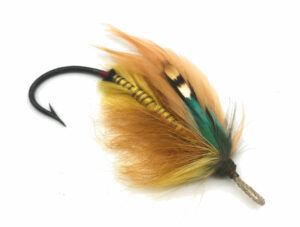
During summer, there will be times when the riffling hitch – or the fly moving on the surface – will be much more efficient than other flies.
Portland Hitch – Simple but a bit intricate
The leader can either be tied to extend to the left or right side of the fly, depending on what river bank you are fishing from. For best performance, tie the hitches on the fly so the leader extends from the fly towards the bank – when the fly is facing upstream.
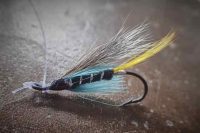
Riffling Hitch the European way
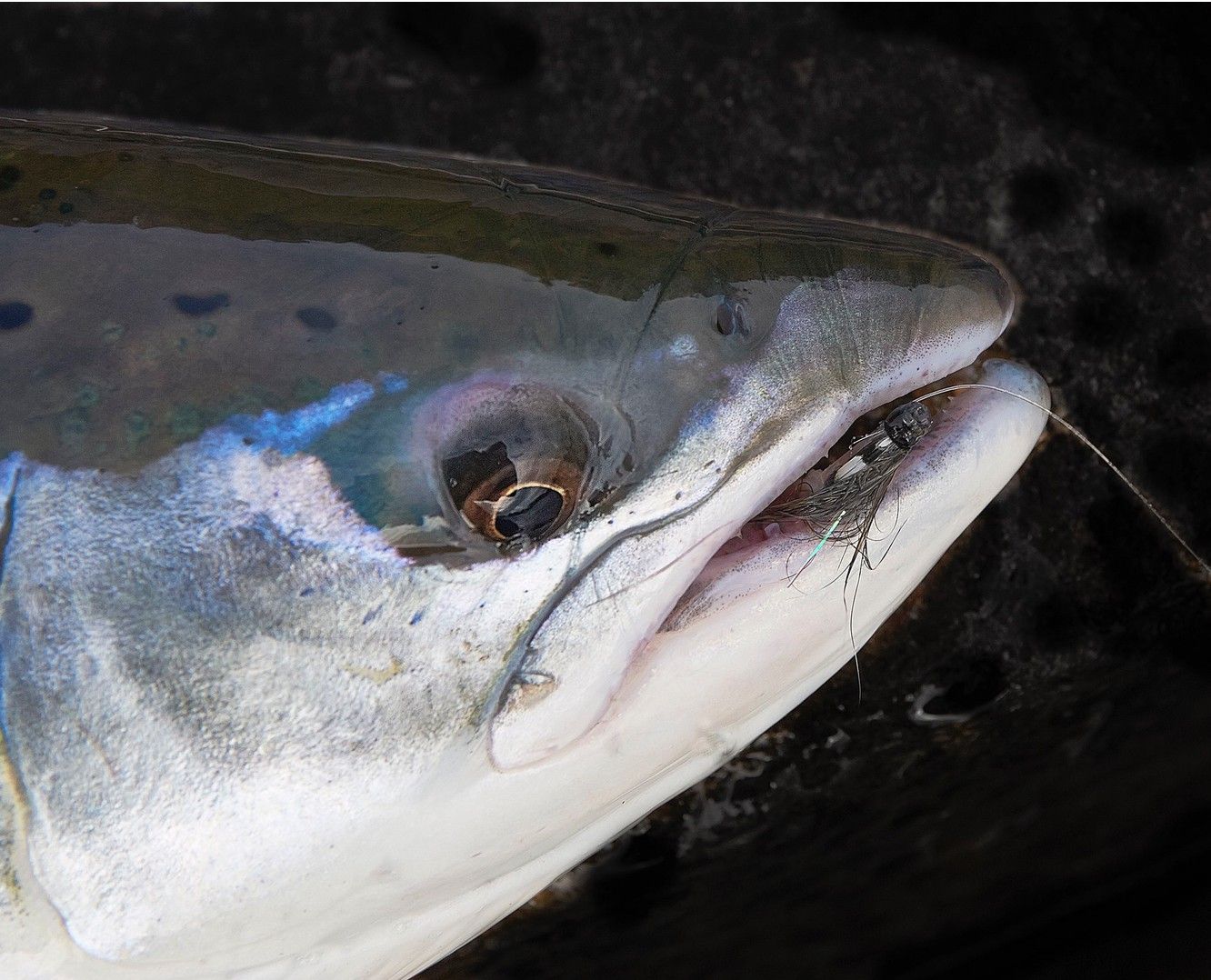
Europeans anglers rarely tie on single hook flies to fish them with a Portland Hitch set-up; we would instead use tiny tubes to work salmon to the surface.
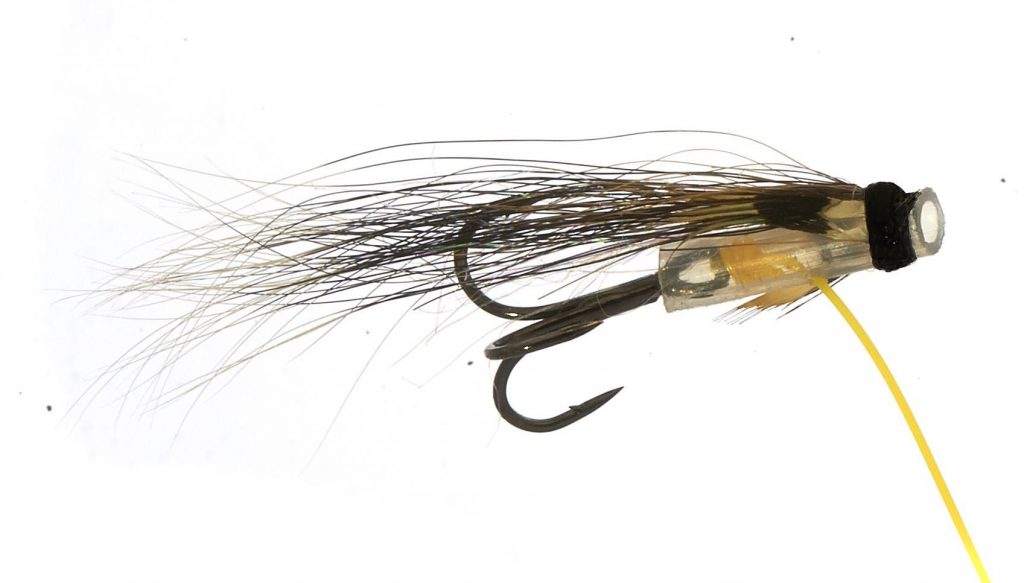
Just as with the Portland Hitch, the leader comes at a slant of the fly – in this case, through a hole in the belly. You can fit single, double or treble hooks in the tube and position the hook how you like.
See the many perfect Riffling Hitch patterns in the Fishmadman Shop.
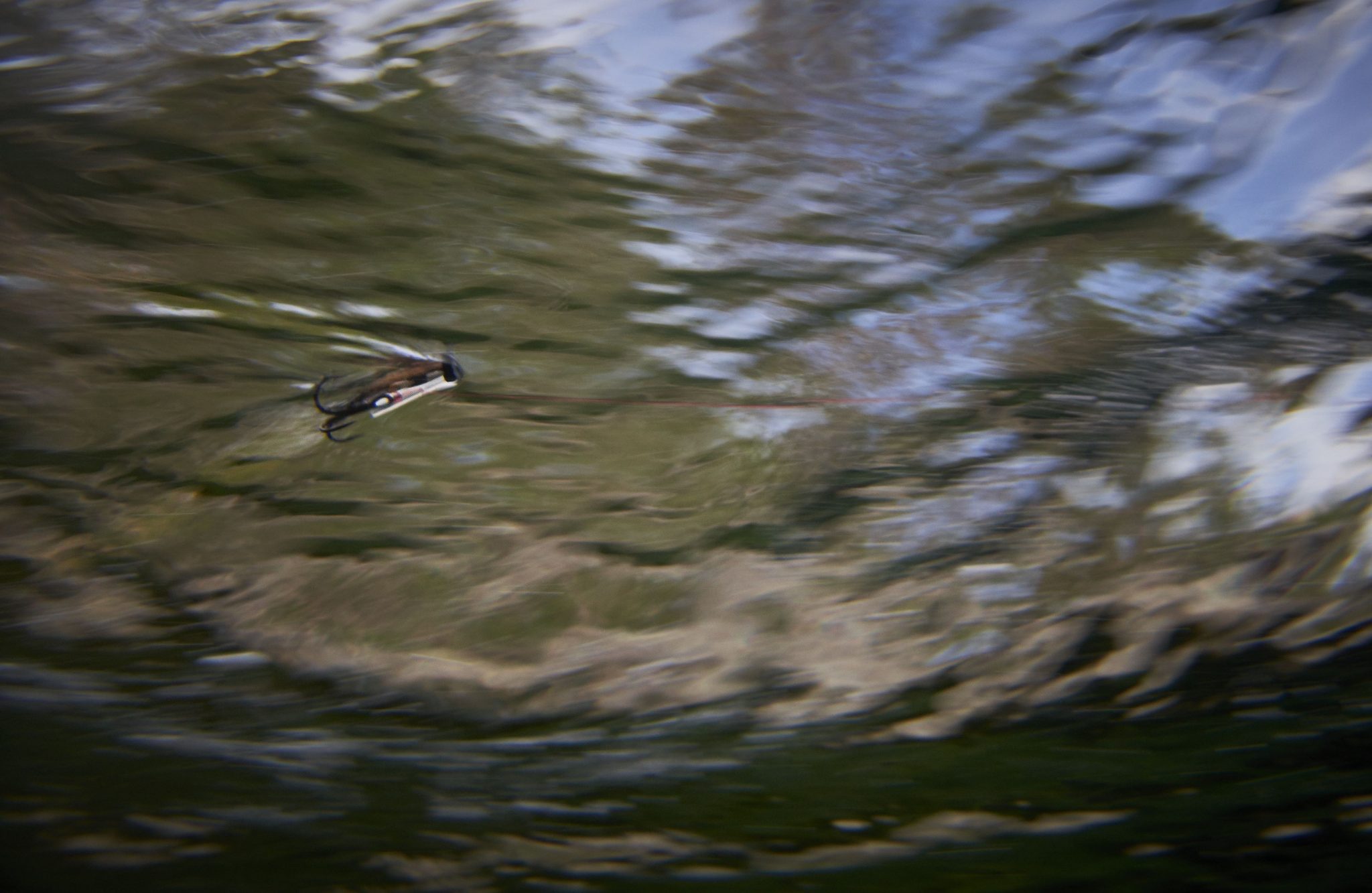
Hitch tube fly seen from below
Single or two holes in the riffling hitch tube fly?
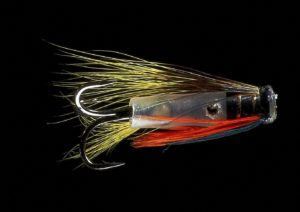
So what is the better solution?
What about the hole in the front of the tube – should that be blocked up?
The front of the riffling hitch tube is typically left open, a detail that often stirs debate among fly tiers and RH anglers. My response to this debate remains consistent: one fly tier may create an excellent RH pattern with a blocked hole in the front, while another may produce a superb pattern with the hole left open. Both variations can result in great flies, illustrating that this aspect has no strict rules. Fly tying, particularly riffling hitch fly tying, revolves around micro-details, and what constitutes the perfect fly isn’t always immediately apparent to the naked eye.
A note on the hole in the front of the tube: I and many other riffling hitch anglers also use our diminutive RH flies as regular tube flies – Put your leader through the fly the traditional way and get a micro tube fly you can fish just below the surface
Fly tying, and especially riffling hitch fly tying, is all about micro details – and what creates the perfect fly is not always visible to the naked eye.
Riffling Hitch is the discipline in salmon fishing where the questions about flies and fishing – expose the fact that we know very little about details in salmon flies.
See our page on riffling hitch fly tying.
Micro details in riffling hitch fly tying - Read our special page on this issue
If you are interested in learning more about micro-movements and details in the art of building riffling hitch tube flies
When to use Riffling Hitch
Riffling Hitch flies will work in all kinds of circumstances. Weather and temperature can not always be held as a guideline – Saying this, I will note that there seems to be a period during summer when a Hitched fly will work exceptionally well. The Hitched fly may pull salmon to the top even during spate and muddy waters when salmon move closer to the bank and out of the fast turbulent water.
 Keep up the deception!
Keep up the deception!
Riffling hitch flies should be fished at an even phase. Atlantic salmon loses interest if the fly loses momentum and stops hitching. Sometimes you may have to add speed by lifting the rod or mending downstream. At other times you might need to slow the fly down by mending upstream or letting out line. Make sure to follow the fly closely during its path across the river salmon tends to leave their lies to intercept the fly, often seen by wakes near the fly or flashes of silver below it. Riffling Hitch wake fly pattern V-FLY Silvertip seen from below Get the fly
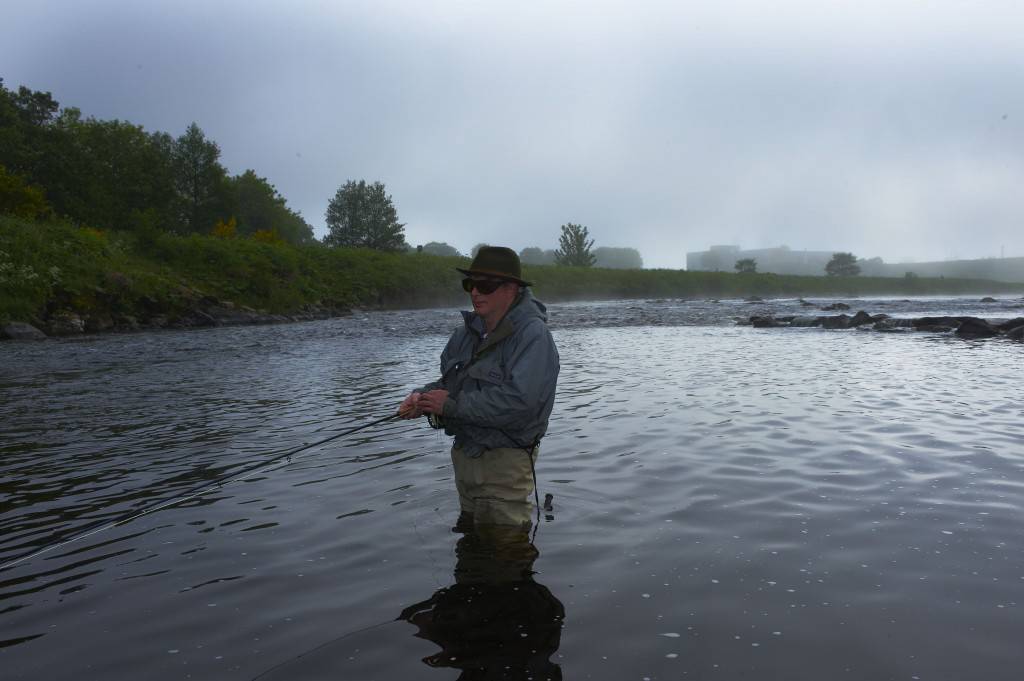
Here UK angler Mr Jerry Rothman hitches the middle stretch of Allan’s stream at the fantastic Kinnaber beat on the North Esk. Salmon is hanging just on the edge of the current, making the V-FLY the perfect Riffling Hitch fly.
Terrible conditions...try a riffling hitch micro tube
Wind from the north and other such terrible things
Riffling Hitch flies are among the few patterns that can still produce results even in unfavorable conditions—though not always guaranteed. For instance, try presenting a tiny, slim Black & Gold Hitchman when relentless northern winds have persisted for days, causing salmon to become selective and reluctant to strike.
Animals blend into their environment
After a brief stint in freshwater, Atlantic salmon shed their sea lice and shortly thereafter, lose their appetite, transitioning into the salmon so many anglers have come to know a species that can prove elusive to catch. Prolonged periods of cold weather and decreasing water levels often exacerbate this anorexic behavior. Perhaps it’s the challenge of enticing salmon on a fly during such trying times that polarizes anglers’ perceptions even further.
Here is an 85 cm salmon that took in horrific cold summer weather on a tiny Black & Gold Hitchman fly…After 1 hour of casting this specific fish, seizing the offering as though it were the first fly it had ever encountered.
In fact, salmon are catchable and tiny hitch flies are often the right medicine for such difficult salmon.
A superior pool for Riffling Hitch fishing
Some places are just made for Riffling Hitch! Here looking at the Lower Dyke pool at the North Esk River in Aberdeenshire, Scotland – The best Riffling Hitch pool I have ever fished – The famous Bailey Middleton pool below.
An excellent river to use Riffling Hitch More about North Esk
STOP PRESS! – Well! The Lower Dyke Pool is no more – It has been ruined by a breach on the dike above – resulting in tons upon tons of gravel being washed downstream into this pool of pools..
White water is often a sign of hot-spots for salmon and steelhead
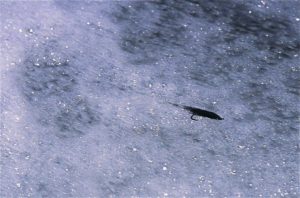
Keeping the fly jumping on top
Cover the area like your panting a entire canvas – top to bottom
Keep the rod high and the line short while you search off the entire area of white water…Keeping focused on regions with different water flow speeds: On the edge of the drop-down where the river falls into the pool – On the edges of the fast water – At the very back-end of the white water – or by a small oily spot in the middle of everything… These spots are not always prominent nor visible – But when ones are found, they will always be the place to focus on…Mr. Salmon will very likely be their next time – The best procedure is to move the fly backwards slowly – When you have covered an area – lift the fly and place it on the water and do this process again and again – only very rarely will a salmon chase the fly that is moving forward…that is the game of its cousin; the sea trout.
Only very rarely will a salmon chase the fly that is moving forward…that is the game of its cousin; the sea trout.
More white-water tactics
An effective technique for attracting the attention of salmon concealed within white water is to employ small, shimmering hitch flies, such as those from the Hitchman series. Begin by positioning yourself upstream, casting across the current, and allowing the fly to dance along the surface. Maintain a high rod position and keep the line lifted out of the water. Don’t fret if the tiny fly seems inconspicuous or if you doubt whether the salmon will notice it—rest assured, they will. With keen observation, you may even witness them aggressively snapping at the fly amidst the turbulent river. Stale salmon, accustomed to countless presentations of sub-surface flies, are often enticed by these minuscule, shimmering offerings.
Just the one you were looking for… A super strong fish on the fly rod… jumped five times and made a 150-meter long run straight into the pool below – Fly a Hitchman Gold
See-through & iridescent
If you have followed our work here on Fishmadman, you would have read about the qualities of see-through tubing and the role that iridescent colures play in nature. We incorporate these elements into many of our flies that we and other anglers have succeeded with over the years.
Like a good cooking recipe, we have combined the right things and made an irresistible dish. Here the Green Hitchmann fly is tied on our 3.2 mm. tubing. The red spot on the throat of the fly indicates the entrance hole for the leader and doubles as a vision of the stomach seen on small see-through fry.
Just... below the surface!
The Bugs
No, advice on riffling hitch technique goes without mentioning the salmon Bugs so popular with North American anglers. Salmon Bug patterns have their methods and unique details worth spending time and effort into learning, and putting the bug´s family of flies into a short frame on riffling hitch fishing know-how is, in fact, a bit sketchy… but bugs are, to some extent the fly patterns that I find to be very well connected with the riffling hitch technique.
My observations over the years have led me to conclude that there is a fishable layer… just below the surface, where a well-presented deer hair bug can do wonders just before the riffling hitch season picks up.
There is a fishable layer… just below the surface, where a well-presented deer hair bug can do wonders just before the riffling hitch season picks up
I fish the bugs wet and close to the surface as possible. I like to add a tiny amount of flotant to the flies. As you can see from the images, these salmon were hooked close to the snout, a familiar spot to hook Atlantic salmon on a small bug fly – Why is this so? I don’t know…but make sure to get your bugs tied on solid hooks, as hooking salmon in this spot often leads to hard-fighting fish.
Flies used: Green & Orange Glitterbugs.
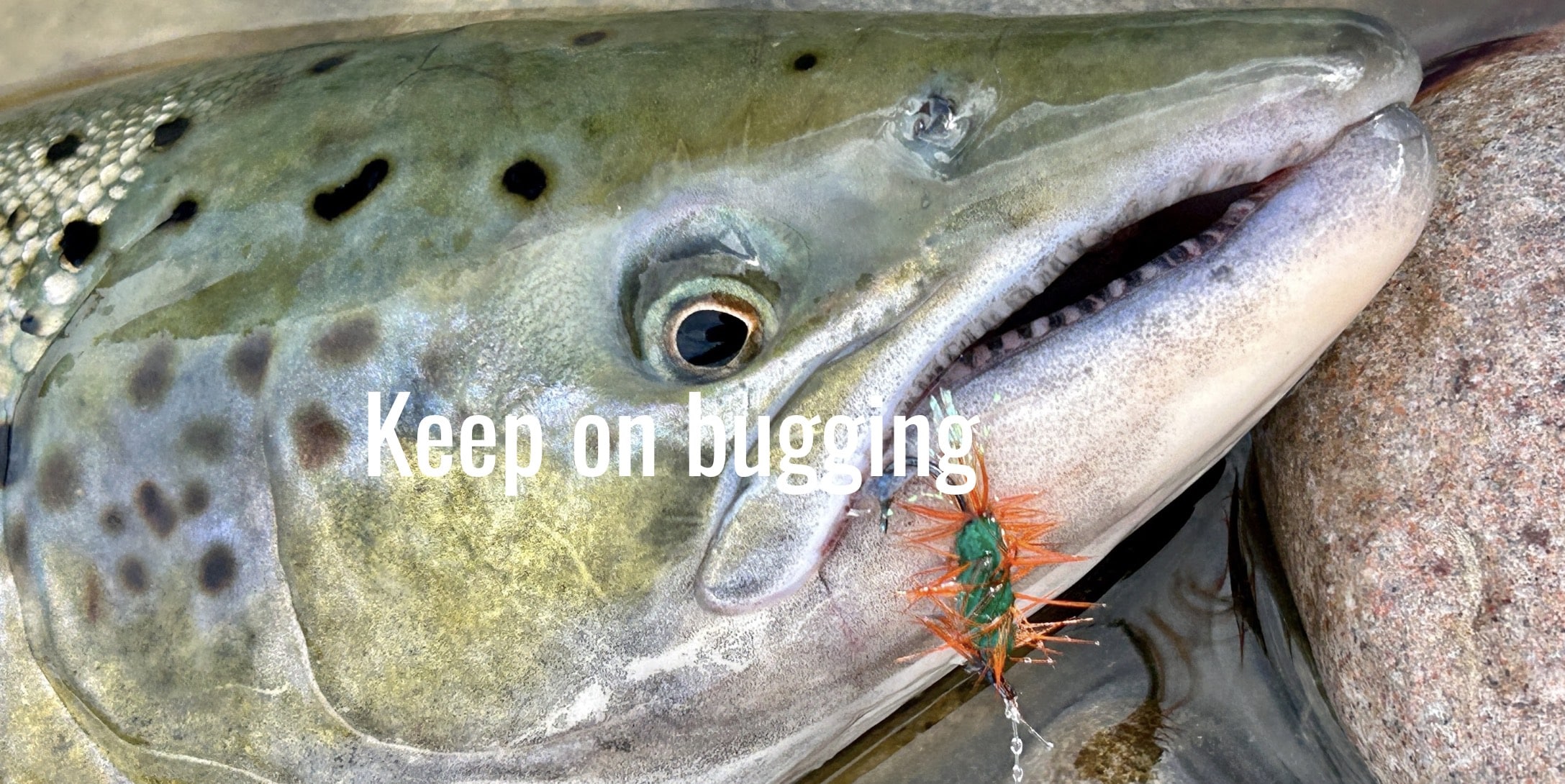

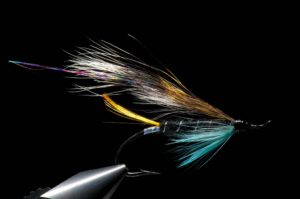
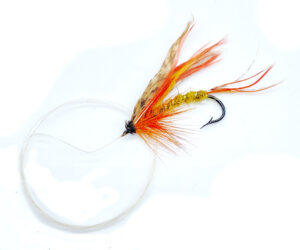
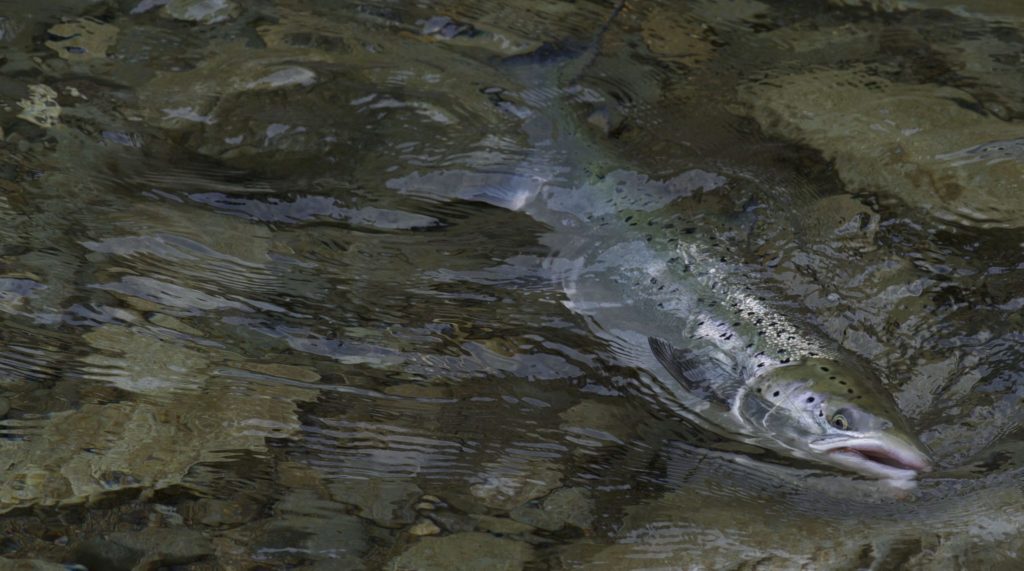
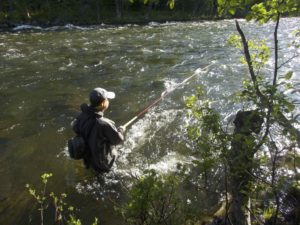
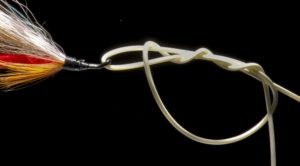
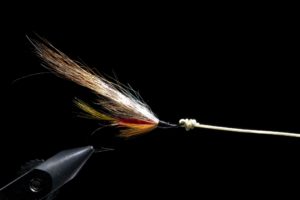
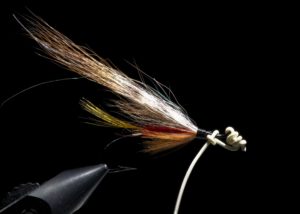
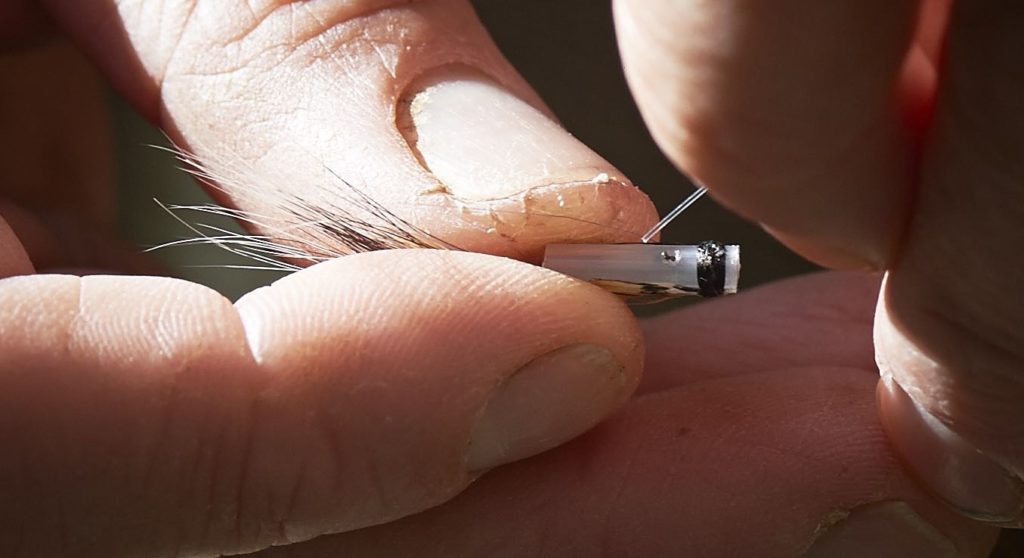
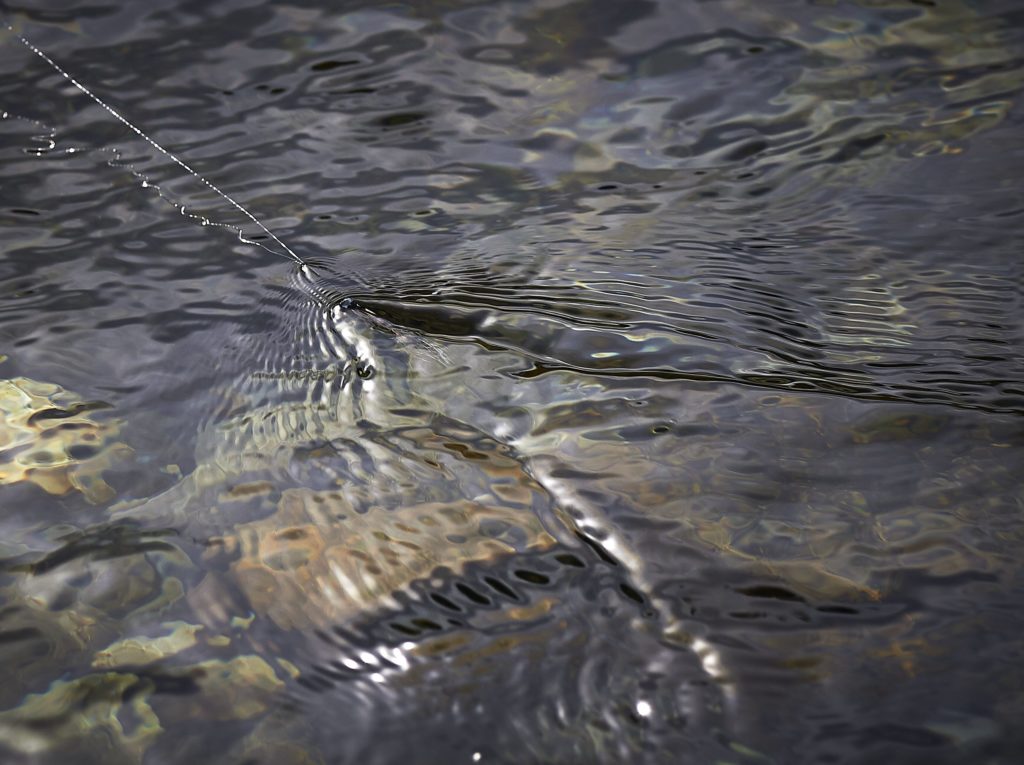
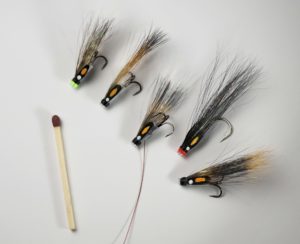
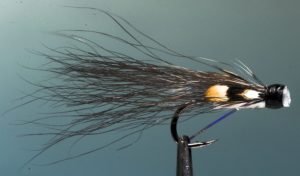
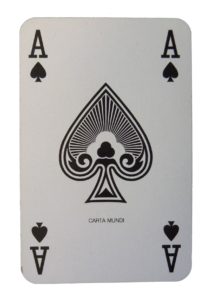
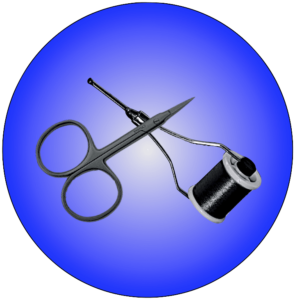
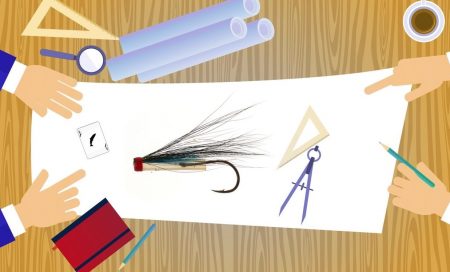
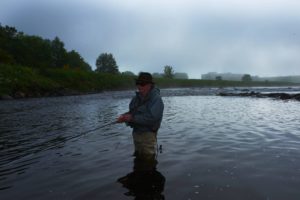 Keep up the deception!
Keep up the deception!